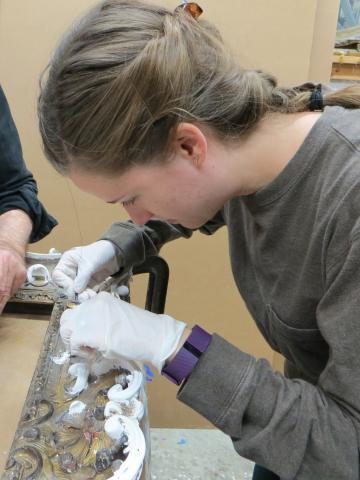At the 2018 ARCS Foundation All Members Conference: Scientific Innovation for the Next Generation, an exclusive tour of the National Gallery of Art will be led by ARCS Scholar Alum Dr. Theresa Duncan, who will share information about her fascinating work in the Gallery’s conservation division.
The National Gallery of Art was privately established in 1937 for the American people by a joint resolution of the United States Congress. Andrew W. Mellon donated a substantial art collection and funds for construction. The Gallery's collection of paintings, drawings, prints, photographs, sculpture, medals, and decorative arts traces the development of Western Art from the Middle Ages to the present.
The primary responsibility of the conservation division is to preserve and study works of art in the Gallery’s collection. The division houses specialized departments for the treatment and care of paintings, works on paper, objects, photographs, textiles, and frames.
In a recent conversation, Dr. Duncan spoke about the special nature of this tour and what conference attendees will see.
“I’m excited to give ARCS Foundation members a ‘behind-the-scenes’ look into how scientific research at the National Gallery of Art is used to support the needs of art conservators. I’m especially excited to highlight how my research was applied to the field of conservation science to provide art conservators with a new technology for cleaning painted surfaces. Through a collaboration between Georgetown University and the gallery, we were able to develop a new type of gel that was able to remove deteriorated varnish layers without affecting paint layers below the varnish, a treatment which I will describe to members on this tour.
During a conservation treatment, conservators often have to remove layers selectively from a work of art, and all of these layers may have very different properties and solubilities. We developed a soft, peelable organogel (a gel composed of an organic solvent system) to aid in the removal of layers from water-sensitive works of art. In two case studies, these gels were able to remove unwanted varnish layers from works of art that couldn’t be cleaned with traditional methods. Removing deteriorated varnish layers from works of art allows conservators to properly clean and revarnish the pieces, so that these types of cultural objects can continue to be viewed and enjoyed for generations to come.”
Space is limited for this special tour, so make sure to reserve your spot.

